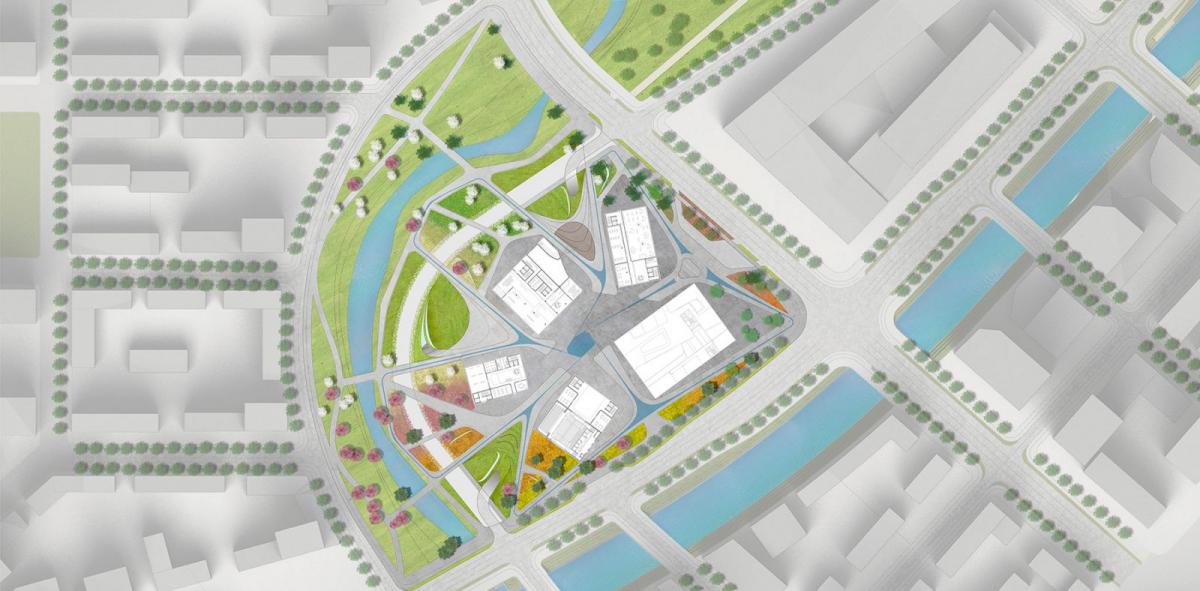
Public space Art Museum

Atelier Loos van Vliet was invited by UNStudio to join the design team in a competition for the Art Museum in Nanjing. The new museum will be located in the heart of the newly developed urban area of Nanjing. The building plot will face from the north-west side a linear wetland park called “The Green Dragon”. From the south-east side it will border a cultural node of the new district. This specific urban setting influenced the landscape design concept. The park side of the plot has a green character. Lawns intended for various events are proposed at the park side entrances. Meadows of ornamental grasses refer to the natural planting of The Green Dragon Park. Only five species of trees are used; each marking a particular entrance. In contrast to the park side the urban side of the plot is more paved and equipped with interactive art and light installations. The linear pavement pattern inspired by the skin of the building consists of two colors of nature stone. Similarly to other design elements it helps in wayfinding. The combination of artificial and natural landscape refers to the Chinese understanding of mountain and water. The building can be seen as a mountain in contrast to the river of The Green Dragon Park. Another design inspiration taken from the Chinese culture is the endless knot. It stands for luck and prosperity. The endlessness is represented by the ongoing form of paths that always return to the Central Plaza. This idea is also depicted by the system of waterways that guide the visitors as well as collect and transport the rainwater from the building towards the wetlands of the park. Each of the entrances is marked with a special water feature. Also various program elements are focused around plazas. Proposed functions like amphitheater with a stage, art pavilion or art installations bring the art outside the museum walls directly into the public space.







| location | Nanjing, China |
| design | 2016 |
| architect | UNStudio |
| landscape architect | LOOSvanVLIET |